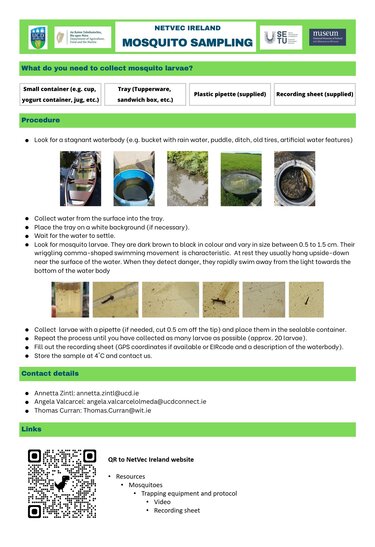Midges
Biting midges are a group of insects in the Ceratopogonidae family. The genus, Culicoides includes over 1300 species worldwide. Midges are small flying insects with a compact appearance. There are several other flies that, on superficial inspection, can be confused with midges, but close inspection of their wing venation, genitalia and certain other, microscopical morphological characteristics can be used to differentiate them.
The gravid females deposit their eggs in gelatinous masses in wet or muddy detritus-rich soil or manure. The larvae, many of which are predatory, undergo four larval stages before developing into mobile pupae and finally adult stages which mate and complete the life cycle. Both males and females feed on nectar and other sugars, however, the females of most species require a blood meal to complete egg production. Midges are ‘pool feeders’, i.e. they cut the skin of the host with their mandibles until they reach a blood vessel and then suck the blood that seeps into the surrounding tissues.
Typically, Culicoides species are not host-specific. When present in large numbers they represent a serious nuisance as the bites are highly pruritic. In addition, allergens in the saliva can lead to skin lesions, resulting in animal welfare issues and economic losses (especially in horses, but also cattle and sheep). Moreover, biting midges can serve as vectors of pathogens of medical (e.g. Onchocerca and Mansonella filarial nematodes), and veterinary (e.g. Bluetongue, Schmallenberg, African Horse Sickness virus) importance. It is important to stress, however, that the vector-pathogen relationship is quite specific and that only certain Culicoides species have the vector capacity to transmit specific pathogens. For this reason, up-to-date knowledge of the current species distribution and rapid methods for the detection and identification of new species are essential to manage the risk of potential future outbreaks of midge-born diseases.

